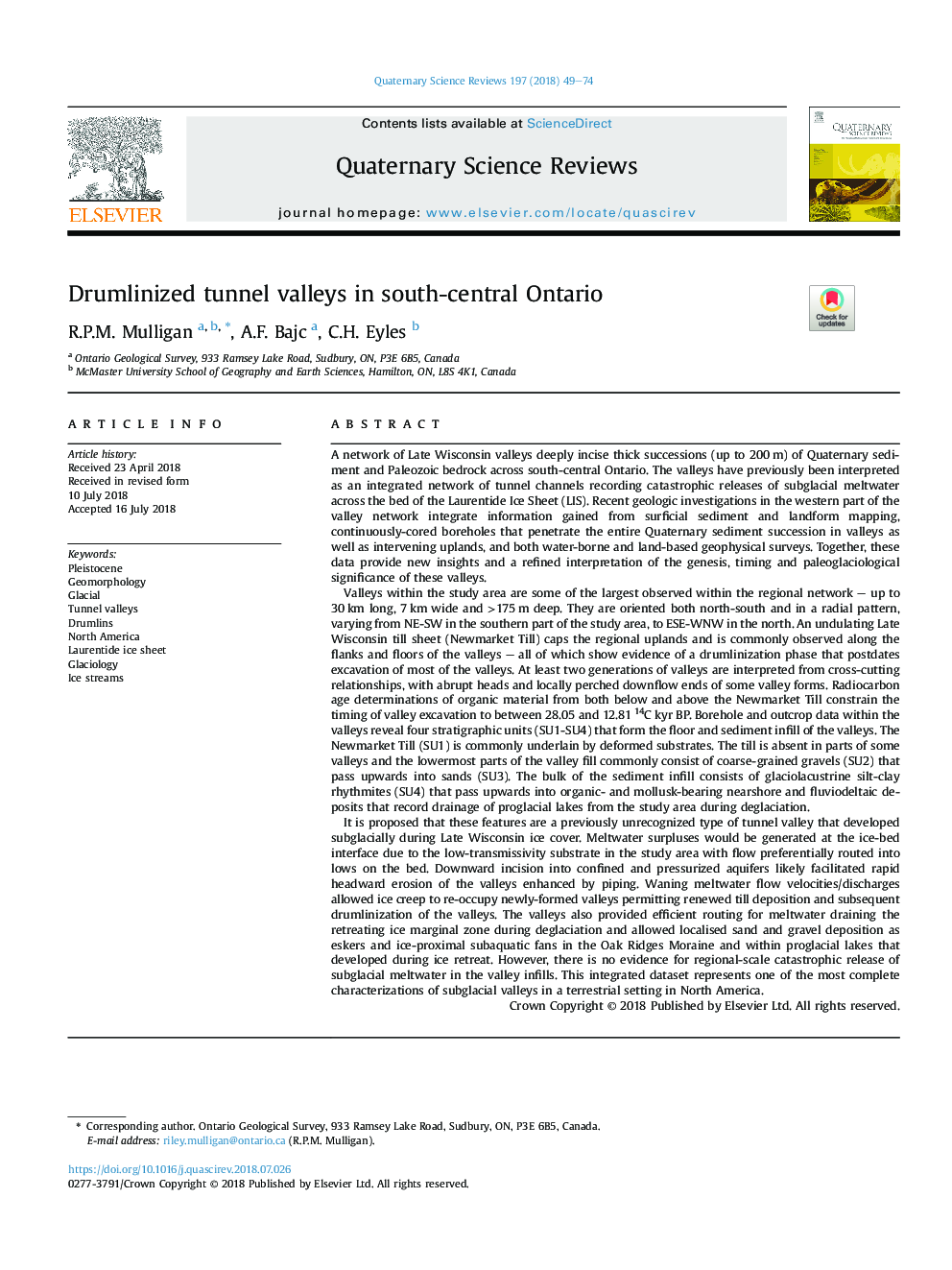| Article ID | Journal | Published Year | Pages | File Type |
|---|---|---|---|---|
| 10120979 | Quaternary Science Reviews | 2018 | 26 Pages |
Abstract
It is proposed that these features are a previously unrecognized type of tunnel valley that developed subglacially during Late Wisconsin ice cover. Meltwater surpluses would be generated at the ice-bed interface due to the low-transmissivity substrate in the study area with flow preferentially routed into lows on the bed. Downward incision into confined and pressurized aquifers likely facilitated rapid headward erosion of the valleys enhanced by piping. Waning meltwater flow velocities/discharges allowed ice creep to re-occupy newly-formed valleys permitting renewed till deposition and subsequent drumlinization of the valleys. The valleys also provided efficient routing for meltwater draining the retreating ice marginal zone during deglaciation and allowed localised sand and gravel deposition as eskers and ice-proximal subaquatic fans in the Oak Ridges Moraine and within proglacial lakes that developed during ice retreat. However, there is no evidence for regional-scale catastrophic release of subglacial meltwater in the valley infills. This integrated dataset represents one of the most complete characterizations of subglacial valleys in a terrestrial setting in North America.
Keywords
Related Topics
Physical Sciences and Engineering
Earth and Planetary Sciences
Geology
Authors
R.P.M. Mulligan, A.F. Bajc, C.H. Eyles,
